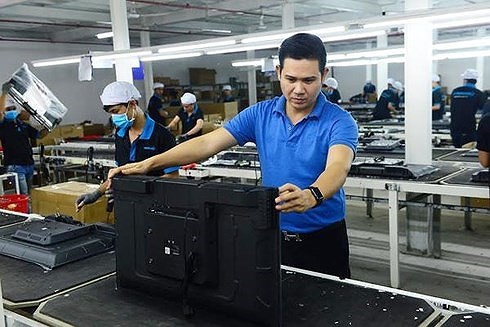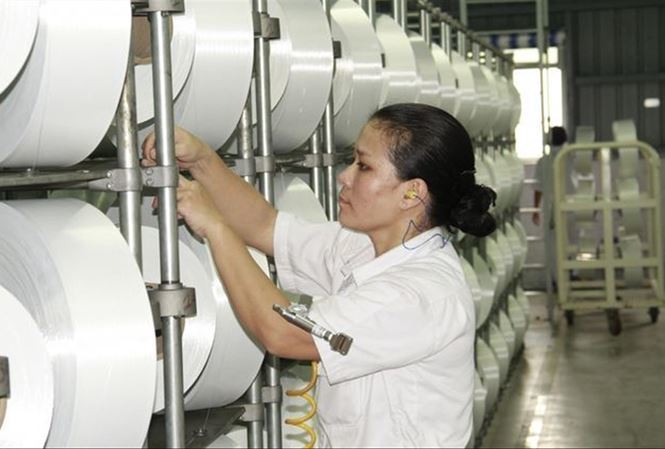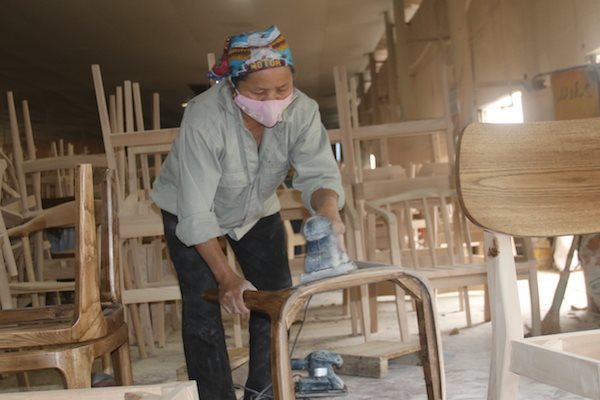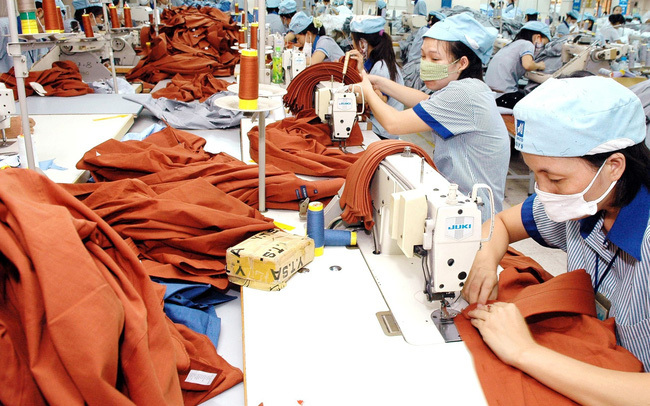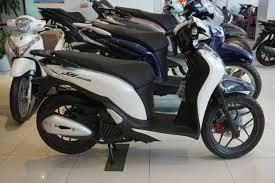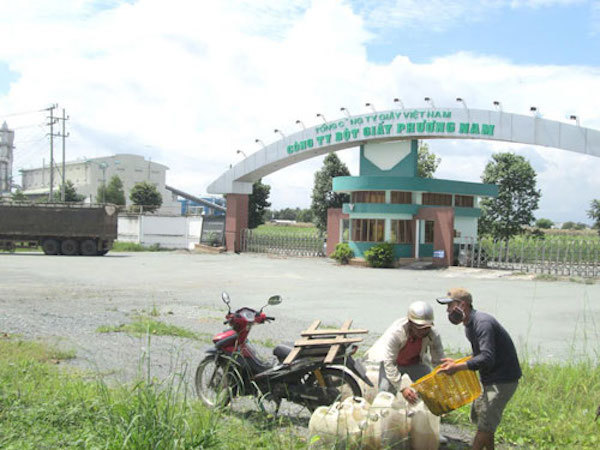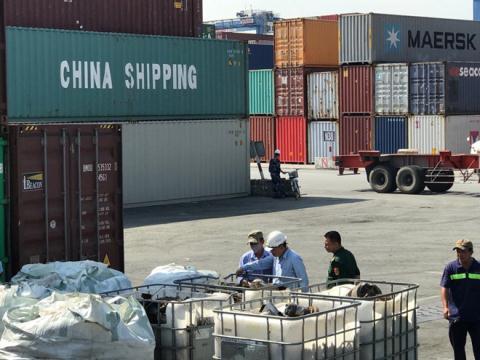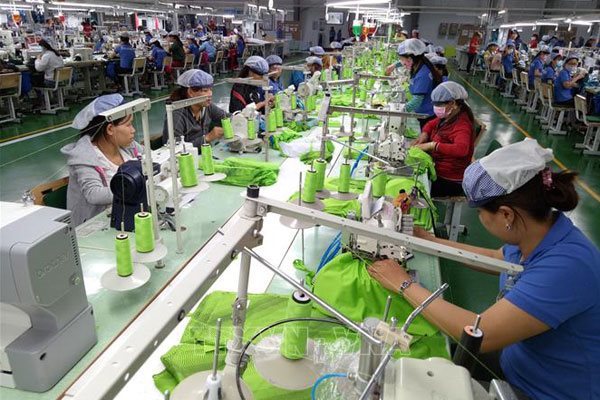- © Copyright of Vietnamnet Global.
- Tel: 024 3772 7988 Fax: (024) 37722734
- Email: [email protected]
MoIT
Update news MoIT
Vietnam to boost exports via retail channels
 Billions of dollars worth of Vietnam’s products are exported via large global retail chains, but these products must adhere to strict requirements to be accepted by supermarkets.
Billions of dollars worth of Vietnam’s products are exported via large global retail chains, but these products must adhere to strict requirements to be accepted by supermarkets.
Vietnam’s textile and garment sector benefits from FTAs, trade war
 The US-China trade war and new FTAs have given a push to Vietnam’s textile and garment industry, helping it gain two-digit growth rates.
The US-China trade war and new FTAs have given a push to Vietnam’s textile and garment industry, helping it gain two-digit growth rates.
Is it necessary to set regulations on discount rates at supermarkets?
 There is no regulation about the discount rates suppliers have to pay to supermarkets or the the ratio of Vietnam-made goods that must be available at supermarkets.
There is no regulation about the discount rates suppliers have to pay to supermarkets or the the ratio of Vietnam-made goods that must be available at supermarkets.
Vietnam dairy producers prosper in CPTPP era
 Vietnam-made dairy products, which have certain advantages in the home market, continue to be prosperous.
Vietnam-made dairy products, which have certain advantages in the home market, continue to be prosperous.
Vietnamese market share in US improves, but insignificantly
 The product items of labor-intensive industries that investors hope will benefit from the production relocation movement, including textile & garments, footwear and toys, still have not seen export growth breakthroughs in the US as expected.
The product items of labor-intensive industries that investors hope will benefit from the production relocation movement, including textile & garments, footwear and toys, still have not seen export growth breakthroughs in the US as expected.
Vietnam’s rice exports drop, causing big worries
 Over the last 10 years, rice exports have brought $2-3 billion to Vietnam a year. However, they are facing difficulties in nearly all key markets this year.
Over the last 10 years, rice exports have brought $2-3 billion to Vietnam a year. However, they are facing difficulties in nearly all key markets this year.
Agencies admit there is no regulation on ‘made-in-Vietnam’ products
 Vietnam has no regulations on criteria for goods to be labeled ‘made in Vietnam’, so consumers have no basis to distinguish ‘made in Vietnam’ and foreign-made products.
Vietnam has no regulations on criteria for goods to be labeled ‘made in Vietnam’, so consumers have no basis to distinguish ‘made in Vietnam’ and foreign-made products.
Industry Ministry’s unprofitable projects revived thanks to outsourcing jobs
 Some unprofitable projects under the management of the Ministry of Industry and Trade (MOIT), called ‘trillion-dong zombies’, have begun making money.
Some unprofitable projects under the management of the Ministry of Industry and Trade (MOIT), called ‘trillion-dong zombies’, have begun making money.
Vietnam warned its woodworks may be taxed by the US
 Vietnam’s woodwork industry runs the risk of being watched by the US government for taxation as its export turnover has soared, especially in the context of the sharp rise in Chinese investment.
Vietnam’s woodwork industry runs the risk of being watched by the US government for taxation as its export turnover has soared, especially in the context of the sharp rise in Chinese investment.
Vietnam’s exports see more opportunities in world market
 By increasing processed and high-tech products and taking advantage of free trade agreements, Vietnam’s goods are being increasingly chosen by consumers in the world market.
By increasing processed and high-tech products and taking advantage of free trade agreements, Vietnam’s goods are being increasingly chosen by consumers in the world market.
Vietnam motorbike market remains healthy
 With 3.3 million motorbikes bought each year, the fourth largest market in the world for motorbikes continues to grow, with manufacturers launching new models into the Vietnamese market.
With 3.3 million motorbikes bought each year, the fourth largest market in the world for motorbikes continues to grow, with manufacturers launching new models into the Vietnamese market.
Vietnam’s businesses try to exploit unfamiliar markets
 Meeting barriers in loyal markets, Vietnam’s businesses have begun eyeing Nepal, the Democratic People’s Republic of Korea and Islamic countries in an effort to diversity export markets.
Meeting barriers in loyal markets, Vietnam’s businesses have begun eyeing Nepal, the Democratic People’s Republic of Korea and Islamic countries in an effort to diversity export markets.
Many guaranteed projects may go bankrupt
 The Ministry of Finance (MOF) in 2018 granted government guarantee to two power projects developed by EVN and PetroVietnam (PVN) with the total value of $1.6 billion.
The Ministry of Finance (MOF) in 2018 granted government guarantee to two power projects developed by EVN and PetroVietnam (PVN) with the total value of $1.6 billion.
PetroVietnam faces unprofitable oil projects overseas
 The national oil and gas group PetroVietnam is taking necessary steps to recover the investment capital in unprofitable projects overseas, estimated at $800 million.
The national oil and gas group PetroVietnam is taking necessary steps to recover the investment capital in unprofitable projects overseas, estimated at $800 million.
Vietnam-made appliance manufacturers struggle for bigger market share
 Vietnam’s home appliances are seen by consumers as good as foreign made products, but they still cannot catch the eyes of Vietnamese consumers.
Vietnam’s home appliances are seen by consumers as good as foreign made products, but they still cannot catch the eyes of Vietnamese consumers.
Two paths for Vietnam's automobile industry
 There are two clear investment tendencies in the automobile industry. First, becoming the leading assembling center in Southeast Asia, and second, buying technologies and making automobiles for export.
There are two clear investment tendencies in the automobile industry. First, becoming the leading assembling center in Southeast Asia, and second, buying technologies and making automobiles for export.
Thai manufactured 3 million cars in 20 years, Vietnam assembled 250,000
 Twenty years ago, five large automobile manufacturers asked Vietnam to open the automobile market. But the proposal was refused.
Twenty years ago, five large automobile manufacturers asked Vietnam to open the automobile market. But the proposal was refused.
US-China trade war increases risk of trade deficit for Vietnam
 The US-China trade war and Chinese yuan devaluation have increased the risk of a widening trade gap, with more imports from China flowing to Vietnam.
The US-China trade war and Chinese yuan devaluation have increased the risk of a widening trade gap, with more imports from China flowing to Vietnam.
Big multinational retail chains not always successful in VN
 Once putting high hopes on the Vietnamese retail market, described as very promising with 90 million consumers, many retailers have had to leave the country.
Once putting high hopes on the Vietnamese retail market, described as very promising with 90 million consumers, many retailers have had to leave the country.
Exploiting FTAs: milk and fabric companies seek opportunities
 The doors to export markets have opened after the signing of government-to-government agreements. However, enterprises still have to overcome many challenges.
The doors to export markets have opened after the signing of government-to-government agreements. However, enterprises still have to overcome many challenges.






